Last Updated on March 4, 2025 by higherring
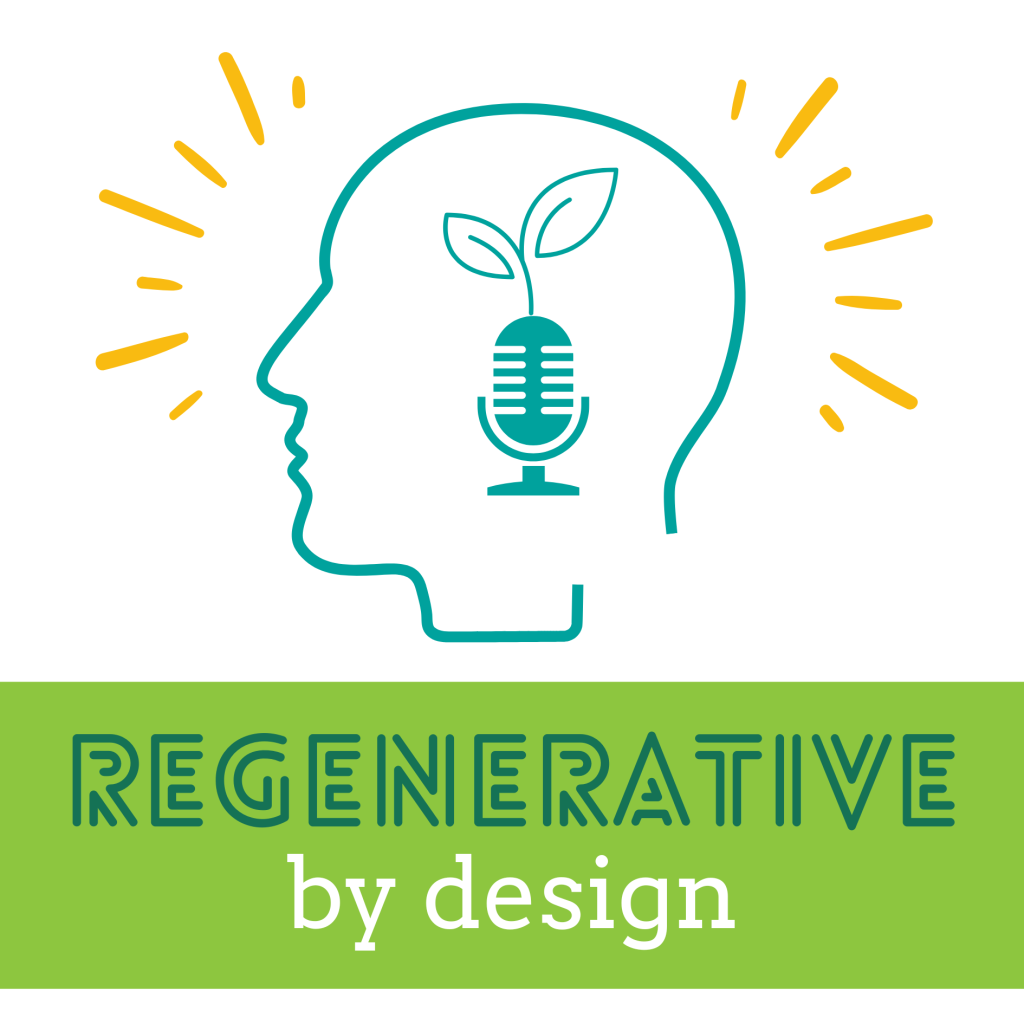
May 22, 2024 Episode
“Pioneering Transparency in the Organic Industry with Colleen Kavanagh“
Join us for an enlightening conversation about transforming the food system for better health and environmental care.
In this episode of the Regenerative by Design podcast, host Joni Kindwall-Moore kicks off the second season with a compelling discussion with her business partner, Colleen Kavanagh, about her journey from working on Capitol Hill to founding Zego Foods, a company dedicated to providing clean, nutritious food for people with health-related dietary needs.
Listen in as they discuss these topics and much more.
- The importance of transparency and testing in the organic food industry.
- Challenges faced in improving school lunch programs.
- Innovations like QR codes for consumer information.
- The Collaborative Integrative Value Chain (CIVC) initiative.
Show Notes
Colleen discusses the challenges of improving school lunch programs and the impact of big food industry lobbying. She explains how Zego Foods emerged to offer healthy alternatives, emphasizing the importance of transparency and purity in food production. Colleen introduces innovative practices like QR code technology to link lab results to product packaging. This ensures consumers have direct access to vital information.
The episode dives into the significance of testing for harmful substances like glyphosate, the struggles of maintaining organic integrity, and the collaborative efforts to build a more sustainable and transparent regenerative food system. Colleen and Joni also highlight their joint project, the Collaborative Integrative Value Chain (CIVC), which aims to reduce costs and improve efficiency in the organic food industry.
Join us for an enlightening conversation about transforming the food system for better health and environmental care. See the full transcript of the episode below.
Full Transcript
Joni Kindwall-Moore: Hello everyone, you are listening to the Regenerative by Design podcast where we will be getting to the root of health, climate,
economics and food. I am your host, Joni Kindwall-Moore. Join me on this journey as we explore the stories of individuals and organizations who are working to realign our food system with both human health and the health of our planet.
Hello, and welcome, everybody.
We are starting our second season of the Regenerative by Design podcast, and our first ever segments on what’s happening in the organic industry. And we’re gonna kick this off most appropriately with Colleen Kavanaugh, who is my business partner, and an overall champion and pioneer of incredible transparency and health. Welcome, Colleen, we’re so happy to have you.
Colleen Kavanagh: Thank you, Joni, I’m thrilled to be launching this. It’s so exciting. It’s such like the next phase of 10 years of work. So it’s really thrilling.
Joni Kindwall-Moore: For those of you who joined me in my last season, we took a journey through the food system transformation that’s happening in this in our modern times where we’re really looking to realign the goals of our food system and agricultural industry, with those of human health and care for the environment.
And if you joined my last season, you probably know that we went in all kinds of different directions, ranging from topics around nutrition and nutrient density, all the way through to soil health and deep chemistry and a lot of fun farming information. In this season, season two, we’re actually going to do a lot of talking about human health, nutrition and exposure to chemicals.
Now, Colleen is an expert in the food space when it comes to recognizing and helping consumers to understand what is on their food, why they don’t want to have exposure to that, and making it a like an overall fun experience and, Colleen, I’d to kick this session off, because I feel like the work you’ve done is so unique and so different than anybody else I’ve ever met. Like what brought you to this point today? Like why are you a food entrepreneur? And what made you start ZEGO Foods?
Colleen Kavanagh: It’s a really good question, because it was quite a long pathway. So I started out, wanting to get involved in politics and making the world a better place. And I worked on Capitol Hill for our congressman for about five years on programs like school lunch, and food stamps and things like that, trying to improve nutrition for low income kids.
I also worked on the school lunch program itself, running government affairs for them. I discovered over time that no matter how hard we tried to recraft the regulations to make the food healthier in those programs, they were only a reflection of the big food industry that was lobbying them. And there really wasn’t anything that we could do from the congressional level because those forces were so powerful.
The big like aha moment for me was during the Obama administration, we were working with Michelle Obama’s staff and with a bunch of like-minded people on Capitol Hill to improve the nutrition standards for high schools, particularly in their snack bars, and the sales that they do for vending machines, because that’s where a lot of high school kids get all their calories during the day.
And we were waiting with bated breath to find out what is big food going to do now that we have these great new nutrition standards. And about three months later, the first product that was launched, and this is not even the punchline of a joke, but it sounds like it. It was a Kellogg’s brown rice krispies treat. Right, and we just threw up our hands. And we’re like, they knew that’s not what we meant.
And I guess they’re always gonna find a way around us.
Joni Kindwall-Moore: Yes, so, I think that’s a lesson a lot of people have, have literally encountered where you’re trying to create change. And you realize, sometimes you just have to take, you know, the bull by the horns, for lack of a better word and say, We’re gonna just create what we want to see, because it falls on deaf ears when it gets out to those big layers of corporate involvement or business structures that take a long time to change or are unwilling to change.
Colleen Kavanagh: Exactly. And I had spent so many years working with constituents, right, grassroots folks, to try to get support for bills that my congressman wanted to get passed or to try to help the school lunch program change and get the people who are interested in the program calling Capitol Hill. So I knew the power of activating the consumer who cares about what you’re doing. And so I decided I would start a food company to kind of get inside the belly of the beast and see what’s happening in the food industry that we have such a rise in autism, asthma, allergies, all of this was happening around you know, 2010, about when I started the company. And then figure out where to go from there.
So, we knew that there was a gap in the food system, and there still is, healthy food for people who have who have health related diets, restricted diets. Whether you have severe food allergies, you have celiac disease, you have diabetes, the products that were being made for people that are compliant with those diets were really highly processed imitations of their counterparts. Cookies, cakes, pizzas, things like that. Yeah, yeah, really manipulated.
And there were a lot of starches, which we know are not good for us. High glycemic, lots of sugar. So we said, Okay, well, let’s do the hard thing. Let’s make a food that meets all of those dietary standards for all those special diets. But it’s based on superfoods. Foods that are whole grains, and good for us. So, fruit, seeds, and oats. And let’s build products out of that, instead of trying to imitate making a cookie or a cake, we were going to just build products from those ingredients that are healthier for people, so that people who have special diets could get the healthiest versions of those foods instead of the least healthy.
Joni Kindwall-Moore: Yeah, it really is a design process. And if you’ve never owned a food company, or worked deep inside a food company, you don’t realize that the design process behind the development of new food products is usually not guided by those principles of like, what’s going to deliver the best health, what’s going to deliver, you know, those overarching principles that you’re trying to achieve. The design process is usually driven just by price point and shelf life. And those are two very conflicting design processes when you’re trying to realign the food system with the needs of human health.
Colleen Kavanagh: And I would add to that machinability.
Ed Bejarana: This episode of the regenerative by design podcast is brought to you by snacktivist nation, elevating climate smart crops and regenerative supply chains through innovative products and transparent market development.
Joni Kindwall-Moore: Yes, good point.
Colleen: Kavanagh: So if you haven’t been, you have no idea, you can have the greatest idea, you can make the best hand pie and sell it to the local bakery, and you make it in your kitchen. And when you get into a factory, you have to make that on a big machine and a that that’s 500 or 1000 pounds. Yeah, completely different. And then how it mixes how it moves through the machinery, how many pounds of pressure, does that explode the proteins and the fibers? like there’s a lot of damage that you can just do taking those same ingredients and putting them through an extruder at a really high pressure, you can ruin all that nutrition.
Joni Kindwall-Moore: Yes, and that’s something that most people just don’t have insight into. So, I love meeting other entrepreneurs that are trying to truly rethink the design process of foods that are available at scale on the market, and try to maintain that integrity.
Colleen Kavanagh: Really important. Allergen-free integrity is where we go to the next part of our story, which is that we were launching an allergy-free product, but without really understanding what that meant.
And so we were not in an allergy free facility. When people raised concerns that these were not gonna be allergy-safe, I started testing our products, and the tests were coming out clean – that they were allergen free. They did not have any of the top allergens in them. And I wanted to be able to show them that this was a clean product. So gosh, wouldn’t it be great if we could just have them scan this bar, and know that it was free of these allergens? And of course, QR code technology was pretty new in the US at the time. But we could do that with a QR code and linking our lab results to the QR code on the package. So, that just started us down a whole new road of purity and transparency and health.
Joni Kindwall-Moore: Yeah, and I’m glad that you took it that direction. Because it’s one thing to pioneer food and food products. It’s another thing to pioneer a new consumer interface where people can have direct access to information about their food. That is a) for safety, which when you’re dealing with allergens is a big deal. But also for just a deeper understanding of connection, like, you know, is if they’re labeling this as organic, is it really organic? Can I see that there is proof that maybe if we’ve imported this organic ingredient from another country, where we don’t have as much, you know, hands on control, there’s a lot of different hands that change custody of the of the ingredient as it goes around the world.
Does it still have the integrity that that organic label stands for? And these are things that you have hit on that? You know, I think for many, many years, definitely for a decade. I’ve heard people talk a lot about it, but seldom do I meet people who actually figure out a solution and a way to help remedy this communication on pack in the food system.
Colleen Kavanagh: It is hard to do it on pack because you have so little space at the time we were making protein bars. So that’s a very how to space, right? So really all we could do. But we did end up learning. So learning the process, doing the allergy piece and the gluten piece. And then in 2016, started testing for glyphosate because there was concern about glyphosate, even within the organic industry. And so we wanted to test our products and say, see, hey, what’s going on here, if we’re organic, we want to be able to be proud of that.
But people were starting to doubt the organic, the validity of the organic certification, and so we tested all of our products. And lo and behold, the cinnamon that we were using was chock full of glyphosate, even though it was organic, and that’s fraud. Righ?. So, that’s fraud. It’s not okay. But we wouldn’t have known it had we not tested. Yeah, so that’s a chance then to find a new supplier. I mean, we tried to work it out with that supplier, and they were like, talk to the hand. So that’s a good reason to switch suppliers on a new supplier, but you really have to keep testing because as you know, glyphosate is out there, right, it drips, you know,
Joni Kindwall-Moore: And for those of you who are listening, I think probably most of you are familiar with the word glyphosate. But it’s what we commonly call Roundup. Like if you go to Home Depot, it’s a common weed killer. It’s considered a biocide. It’s a broad spectrum antibiotic. And it is used on so many different things throughout our food system.
A lot of attention has been paid in the last couple of years to using glyphosate as what’s called a desiccant. So if they go in harvest oats, way, far north in Canada, where they have really short summers and very cold, wet falls, they started, the EPA approved in 1996, I believe it was, to start allowing the use of Roundup or glyphosate as a desiccant. Now the problem with that is that depending on where you are, there’s a lot of different rules about how many days have to go by, etc.
But for those of us who are worried about our health, and the gut microbiome and all of these other things, that leaves a residue of that compound on the food that is actually detectable, you can find it in our food. And there have been there’s a lot of action in the news this year, in particular, about glyphosate residues on Cheerios and other commonly consumed oats. Now Colleen has a really interesting play in that her products, like she mentioned, have oats as the background, the backbone of her product development. So Colleen, if you could tell us a little bit about oats and why you use the oats that you use and why they’re special.
Colleen Kavanagh: Yeah, and that’s a good segue with the conversation of glyphosate because when we talk about it being used as a desiccant, those fields are, you can’t normally if you’re just using Mother Nature control when you harvest, right? But if the farmers know that a bit of wet weather is coming, and those oats are still green, and they need to harvest and the last thing they want is water when they harvest, right? It can lead to all kinds of problems. So they want to dry out that plant, they want to basically kill it, so that they can harvest faster. So that’s why they would do a pre-harvest desiccant.
And then the problem with our cinnamon, they actually were spraying it on the bark after they took it off the tree. And that would dry it out faster. So it’s kind of used in different ways, but also as a desiccant.
And one of the reasons why initially I wasn’t using oats because there were issues with oats. So celiacs were worried that they weren’t really gluten free because of cross-contact. And oats themselves are gluten-free, but they’re often grown in fields where there’s wheat popping up and so there’s some cross-contact there. And then also this glyphosate issue.
We met a woman at a conference. There’s a good reason to go to like-minded, values-aligned conferences, right? She and I were talking at the very end, which just goes to show you never close up your booth early. She was starving. I had snacks, we were chatting when she said well, why don’t you do any oats with ZEGO? I’m like, oh, well, you know, there are questions about being gluten free and there’s glyphosate and there’s not enough, you know, and she went through every single one. She’s like my family grows out in Montana, I call it the Greater Montana region, but it’s Montana and the surrounding states.
And, you know, we actually have our farmers signed contracts that not only do they not use glyphosate, of course on their organic, which is what we would be buying oats, but also on the surrounding fields, so there’s no chance of drift and they made the farmers sign contracts that they wouldn’t use paraquat which is another very dangerous chemical. Actually so dangerous that if you drink a thimble full of it, you will die. So it’s much more, yeah, it’s much more toxic than glyphosate is.
And then they also were using a method called Purity Protocol, gluten free oats which is where you are may you have structures in place from you know, seed all the way through harvest and processing. Trying to be gluten free every step of the way. And these oats actually grow shorter than invading, you know, species like different wheats and Speltz and things like that.
So that if a farmer sees the tall shoots coming up, they can actually go through and just chop those off before they even sprout a seed. So you really can control for that. And it opens up oats to this whole group of celiacs and highly sensitive gluten intolerant people who couldn’t have them before. And the really beautiful thing about these particular oats that we use, the’re hull-less oats that have been bred to be higher in protein, by the farmer that we work with over the years, naturally bred, it’s not a GMO issue at all. It’s just naturally bred. And they actually have about double the digestible protein of typical oats and 20 to 40% more iron and fiber, which is unbelievable. Big deal.
Joni Kindwall-Moore: A big deal. Yeah, it’s a big deal.
Colleen Kavanagh: Yeah, every teaspoon they eat needs to be higher in nutrition than typical.
Joni Kinwall-Moore: Yeah, and it’s a win win. And what’s really fun, and I love these small, the small world stories. When I first started my journey as an Snactivist, one of our very first products was a Montana oat pancake mix made from the flour from these exact same oats. They come from Gary Iverson, who is one of our partners in the Montana project.
So it’s like really funny when you look at how the universe comes together and brings people together, even when there’s quite a few years that span the middle of it. And it’s just meant to be. So fast forward a few years, Colleen’s doing all this incredible pioneering work. And I think it was a two or three year period, consistently, people would say, you don’t know Colleen Kavanaugh at ZEGO Foods? I can’t believe you guys are not friends! I can’t believe you don’t know each other. It was like, yes.
So we have a friend named Tim Richards, who founded a company called Philosopher Foods. And he’s doing incredible stuff now. Yeah, great stuff with almonds, and regenerative almonds and organic almonds. And he finally said, Oh, my gosh, Colleen is in the room here, you’re not allowed to leave. We’re gonna go find her, get her together, and we’re going to get you two introduced and the rest is history.
And that was when we decided we had, you know, a such aligned, you know, mission in the world to try to, again, realign the goals of our food system and our agricultural system to support human health. And, you know, take care of the planet while we’re at it. So that gave birth to a big huge project that we’re working on now. And Colleen, I’ll have you talk a little bit about how that came together. And what precipitated those early conversations when you and I were looking at our businesses, looking at our teams, looking at our goals and thinking, you know, sometimes it’s better just to work smart than to just work hard, and combine and, and do big things together.
Colleen Kavanagh: I would say that neither of us could have worked harder than we were already working when we met each other. So we had to collaborate, right? We had to collaborate; we had to build a team. And we had to bring in more people, more brands, and more money. And we were able to do that, which is amazing. So we had this wonderful combination of events happen where our farmer, the main farmer that we work with, wanted to retire, and his partners. And so he invited us in and said, hey, you know, we have this processing facility that you’ve been using? What do you want to do? Bring us a business plan.
And that was right around the time when USDA was starting to put out some grants that were available, really, specifically around organic grains, but and legumes and a couple of other things. I think it was dairy and maybe some meats, and to clear up the bottleneck that exists in the organic industry where we have farmers who are growing organic grains, and we have consumers who want it, but we couldn’t get them processed because it was no there’s no regional processing anymore. Over time the big processors had either bought up and most often closed the smaller processors or maybe it was a farmer who had a little processing on his land, and he’s no longer doing that anymore. But they had closed hundreds and hundreds of these. I mean, 1000s had closed, yeah. 20,000 down to a couple 100.
Joni Kindwall-Moore: So yeah, it’s like an extinction, when it’s like a business or economic extinction period. And when you think about the impacts on our food systems and resiliency and food systems, it’s a big deal. It’s something that people don’t really give thought to, like lots of the things we’re talking about today. But um, it’s also one of those startling moments when you realize here in the US, you know, you go to the grocery store, you go to Costco, you go to Fred Meijer, and you think, oh, there’s so much organic food available on the market, but it’s still only represents like under 1.8% of our domestic farmland, that’s being farmed. And, so clearly, a lot of this has been imported from overseas. And we want to rebuild our domestic infrastructure in our domestic agricultural sector that is dedicated to organic farming.
Colleen Kavanagh: Right, we’ve got farmers going under every week in the US. And yet, we have these, what we call the ‘value added crops’ that are being grown overseas, and we’re importing them, that’s crazy. The farmers will get a bump from growing things that are organic. Of course, if they’re regenerative and organic, that’s even better. And if there’s extra protein, we will pay them more. If it’s gluten free, they get paid more.
But if they’re just growing a commodity oat there, pricing is very, very low. So yeah, there were so many reasons for USDA to want to promote this. So shortening that story. That was right after I had met you. These grants were available in like, five or within six weeks. Then we just quickly pulled together an amazing group of people, because both of us have been doing this for quite a while now.
And so we really knew that people who had bubbled to the top, who were the best marketers, who were the best project managers, who you know, all those people. I love that we have a COO who used to be with Kraft Foods, and we have a project manager, he used to be with DuPont, like really wanting to affect the food system in a really positive way to come to us with an amazing experience. Everyone is amazingly committed.
So the grant that we received, will feed into a new business model that we’ve put together that we call Collaborative Integrated Value Chain. And it really comes from solving the problem where in food and farming, everything happens, to use a word, in silos, right?
The farmer grows, but he grows with the processor, and the manufacturer then will or the brand will make what they want to make. And then they hope that there’s a processor, and they hope that there’s a farmer, and they hope they can get it from the US. But no one’s talking to each other. And then we’ve got consumers, right, you got like four silos, and then the consumers have to pay way too much. Right? Yeah, especially for that value added piece.
So the model that you and I put together, which we call CIVC really takes all of those problems and weaves together the resources to form a solution for everybody that saves money, and brings money to farmers, lowers processing costs and packaging cost per values, allowing brands to then weigh and get it to consumers at a lower price and have a higher sales rate on shelf in stores. Because now for example, with our our double protein oat product, which is sort of our signature product, that’s $8 at the store right now, we could sell that for under seven, if we’re able to under the CIVC model that we’re doing. So it’s a huge difference.
Joni Kindwall-Moore: Well, and that’s a big deal. Because I mean, most people, when you talk to them about what the barriers are to accessing healthier food cost is like, usually the number one thing. I mean, there’s always people who are like, I just don’t like healthy food. But for everybody else. Cost is a big barrier.
What we don’t often think about is that the premium cost on healthier foods is often a reflection of inefficiencies in the value chain, not necessarily even a premium at the field. And so for me as a consumer, if I’m going to pay extra for an item of food, and I want that to be driving the quality of what that food is, not just paying for inefficiencies because it was small scale processing, or small scale, you know.
And so for Colleen and I, we were like, how do we solve those problems of scalability? Because we know in any economic model, scalability and volumes drive a lot of the equations. And so when you start looking at working together, you start to solve a lot of those issues, because now you have some competitive purchasing as a group. And that allows our customers to eventually acquire a more affordable product that still has the promise of that high quality and make sure premiums go back to the farmers and reward them for doing best practices.
Colleen Kavanagh: Yes, and we’ve built in a financial system for paying farmers that does reward them for better practices. So I think this is what I’m most excited about.
Joni Kindwall-Moore: Me, too.
Colleen Kavanagh: And what you’re most excited about our model, is that we have a new pricing system built on what they were already doing in Montana, so we didn’t invent this, we’re just taking it to the next level. Where if they’re growing, I’ll use the oats for example, these oats are organic oats.
So, let’s start with just plain, hulless oats, so that’s a specialty variety, it’s not a commodity, that is hulless oats. That’s eight cents a pound. If you grow them so that they’re gluten free. Purity Protocol gluten free we will give you an extra 12 cents to 20 cents a pound. If you can also grow them organically, certified organic, you get 32 cents a pound. And then for, oh I’m sorry, 38. And then for every percent of protein higher than, I think, 19, we pay you an extra penny a pound.
So we can then replicate this for millet and other gluten free grains that farmers want to grow as rotation crops so that they can grow more regeneratively. And we can explain to consumers because you and I have the brands, and we’re going to bring in other values-aligned brands to help us explain this as well. Like, we have two offerings for you, we have organic, and we can show you all of the metrics. And we should talk about that, too, Joni.
Joni Kindwall-Moore: We’ll have to do a whole session on that.
Colleen Kavanagh: Yeah. But, we can explain to them through this system that we’ve put together a purity verification and visuals in a very easy to understand format, where consumers can just scan the QR code on the package and see, Oh, I see this either is certified organic, and I can see that it’s clean. And I can see that heavy metals are low, which of course isn’t part of organic certification, but it’s something people really want, or they’re getting say, okay, this is what we’re coining a clean conventional.
What does that mean? Well, when you scan that QR code, you can see what that means, you can see that there’s still no glyphosate, you can see that the heavy metals are better, you know, but it doesn’t have that certification. So it gives us the ability to differentiate these crops to the consumer, so that we can reward the farmer when they get better, instead of having the 01 game of, you know, organic or conventional. And that’s it. Yeah.
Joni Kindwall-Moore: Yeah. Which is so important when it comes to like food, equity and access. And, you know, like, you look at large scale contracts, like school lunches, like what you worked on in your earlier career, or institutional, those kind of places where they, they want organic, they want something healthier, they don’t want to knowingly be giving chemicals to kids. But sometimes the price points for a certified organic product don’t necessarily meet the mark or something.
And then sometimes we have farmers that for whatever reason, need to opt out of the organic certification program for a while, like they maybe need to do. There’s a variety of reasons why this happens from time to time, but they’re still not using the chemicals that are going to leave residues on the food, etc, etc, we don’t want them to just go all the way back to the bottom of the pile commodity, where they’re totally selling into a non differentiated market, because often they’re doing something that is creating a higher quality product, whether that’s free from things you don’t want to be exposed to or full of certain nutritional compounds, we want to make sure that we’re meeting that market and matching it to people who need high volume, lower cost commodities, that are not just commodities.
Colleen Kavanagh: Yeah, there’s a lot of chatter in certain sectors of our world where people are talking about organic doesn’t mean anything, none of these certifications mean anything, because they’ll see a report that’ll come out from a well meaning nonprofit. And they will publish these results. They’ll say, you know, we published reports that studied 20 different types of oats. Then a third of those were organic, and two of those, they detected a small amount of glyphosate.
For some people, that’s enough to just make blanket statements, like “all organic food has glyphosate.” I think it’s really important for us to, as we’re working, also working to improve organic, to recognize that it is actually by and large, much cleaner than conventional, you know, when you’re looking at this in our data, when you’re looking at glyphosate, the typical conventional oat has in the US over the past three years since has 630 parts per billion of glyphosate in it. And for organic, it would be what we call no measurable amount. So that’s under 10 parts per million. So it’s a big deal.
Joni Kindwall-Moore: Absolutely. Yeah, and it’s such a big deal that they’re, you know, that’s what this class action suit against Cheerios is all about, that they actually tested the glyphosate residue, and it was high enough, where it should technically be listed as an ingredient on the declared ingredients level, because the glyphosate would be at a higher amount than like added, like B 12, for example, or B, you know, whatever they’re adding, the amendments to the oat flour.
And that is really frightening when you think about it, um, especially considering kids eat Cheerios all day long. So I think there’s never been a more important time to really re-embrace what organic stands for and make sure we’re re-aligning it with the values that when you buy something that is organic you are buying it because you don’t want exposure to those chemicals and you don’t want to be supporting and paying for them to be sprayed into our environment. Those are the two number one motivators and I think sometimes people just forget that.
Colleen Kavanagh: And the transparency is really important. It was incredible to me that we don’t have in the US a right to know if there’s toxic residue on our food before we eat it? Yeah, I mean, you just pause there, right like that, that is amazing if you were to call a company and ask them if you could see their heavy metal test for the baby food that you buy, yeah, even if they have it, they don’t have to give it to you.
Now, heavy metals that’s starting to change with a new California law. But anything else, you do not have a right to know that information, nor do you really know how to interpret it. And when we get into more details, and showing people visuals of what we’re doing on how to explain things like heavy metals to people, we have visuals now that people can use not just for when they scan our products, they can go across their kitchen, and look at all the different products that they have, and actually take our visuals and see where they fall on the scale,
Joni Kindwall-Moore: which is so cool and very novel, very, very novel. So I mean, this is just there’s so many layers of impact that happen with ZEGO Foods and with CIVC. And that’s what makes it so fun. But it’s also one of the reasons we’re going to break up our segments about these projects into a whole series that’s going to go throughout the podcast season.
And we’ll also be speaking in little, just updates, like when we have really fun, good news, because I’ll be doing some other Regenerative by Design interviews with some other leaders and movers and shakers in the ag and food space. We can even give little updates there. So that way people just know what’s going on. Because this is really something that is truly transformational to the food system. And we’re proving that other models really can lead to better results, both economically and for health, human health and health of the planet.
So I’m really excited that we got to take this initial plunge into the world of Colleen Kavanaugh, who is a, an incredibly impressive individual, even on a bad day. Like literally, I’m always like, wow, it is absolutely truly impressive. So thank you for the work that you do, Colleen. It’s absolutely stunning. And it’s going to be so much fun to follow this and actually have a podcast that we regularly update people that want to know what we’re working on. And they can join us.
Colleen Kavanagh: yes, I agree. I mean, it’s so funny, just describing the business model. What we’ve already done is going to take us several podcasts. We can do, like I go to the factory and show we just installed this piece of equipment. We’re gonna meet this farmer and you know that we could actually do it, but it is flex system that we built for the CIVC model. But when you understand it, it makes so much sense.
Joni Kindwall-Moore: Yeah, and it’s kind of simple, when it really comes down to it, it’s just rethinking the efficiencies of the system so that we make sure that we prioritize the things that we value, which is quality, and minimizing exposure to toxic compounds. It’s pretty simple.
Colleen Kavanagh: So and treating the thing milling and co-packing as almost like a utility, where it’s not a profit center, that was really the linchpin of what we’re doing. And we could not do that without the USDA money. And we couldn’t do it without each other. It really is a collaboration, to do that, it is a game changer. And it will help smaller values aligned brands compete with big companies that do have their own processing facilities and milling facilities. And they don’t treat them as profit centers.
Joni Kindwall-Moore: Right, exactly. I’m so glad you brought that up, Colleen, we kicked off season one of Regenerative By Design with a dear friend, Don Sherman, of Sherman Produce Heritage Farms. He said, We need to treat our processing infrastructure more like a utility or community center. And and so I think this is really cool, because it’s a theme here. But it’s something that is so important because access to food is essential. I mean, it is a national security issue.
We’re going to talk about food security as national security in this season. We’re going to have some really exciting guests joining us, literally from like military and from health to talk about why we all need to come together to really take back our food system and make sure that it’s resilient and in the hands of the people who steward it and who operate it right here in our own backyards. So, so many more things coming, you guys.
Colleen Kavanagh: I’m gonna do a little housekeeping, I need to say a blurb. So this grant comes to us from USDA AMS Agricultural Marketing Services. It’s called an organic market development grant. And we are doing work underneath that grant, but this podcast does not represent USDA views.
Joni Kindwall-Moore: That’s right. And you’ll be hearing that more and I just want to say thank you to the USDA for hearing us and hearing so many of the partners that received these grants. I have to say I have the great pleasure of working with a number of entrepreneurs in our area that have received either these grants from MDG or other grants that have recently come out through USDA initiatives to help strengthen our domestic food and agricultural system. So thank you, USDA. Thank you, Colleen. And I’m so happy to be back in the studio more good things to come later.
Colleen Kavanagh: Thanks, Joni.
Ed Bejarana: Funding for Regenerative By Design podcast was made possible by a grant cooperative agreement from the US Department of Agriculture Agricultural Marketing Service, its contents are solely the responsibility of the authors and do not necessarily represent the official views of the USDA.
Joni Kindwall-Moore: Thank you for joining me on the Regenerative By Design podcast. Please take a moment to review our channel on your favorite podcasting service. And share this session with your friends and colleagues via LinkedIn, Twitter, Instagram, Facebook, or wherever you connect with your community.
All audio, artwork, episode descriptions and notes are property of Joni Kindwall-Moore & Colleen Kavanagh, for Regenerative by Design, and published with permission by Transistor, Inc.BROADCAST BY
Podcast Information:
Regenerative by design is hosted by Snacktivist. Snacktivist creates baking mixes and finished products that are allergy-friendly, soil, water, and carbon-focused, all while radically impacting human nutrition by transforming staple foods into something more than just empty calories. Visit snacktivistfoods.com to learn more.
Funding for Regenerative By Design Podcast was made possible by a grant/cooperative agreement from the U.S. Department of Agriculture (USDA) Agricultural Marketing Service. Its contents are solely the responsibility of the authors and do not necessarily represent the official views of the USDA.
For news about CIVC visit our blog: here.
-
Organic Plant Based Protein Powder (15oz bag)$29.99 — or subscribe and save 10%
-
Organic Gluten-Free Muesli: Nut Free Cinnamon Twist (13oz)$9.99 — or subscribe and save 10%
-
Organic Gluten Free Muesli: Apple Cranberry (13oz)$9.99 — or subscribe and save 10%
-
Organic Plant Protein (5 bags, 15 oz each)$129.95 — or subscribe and save 5%
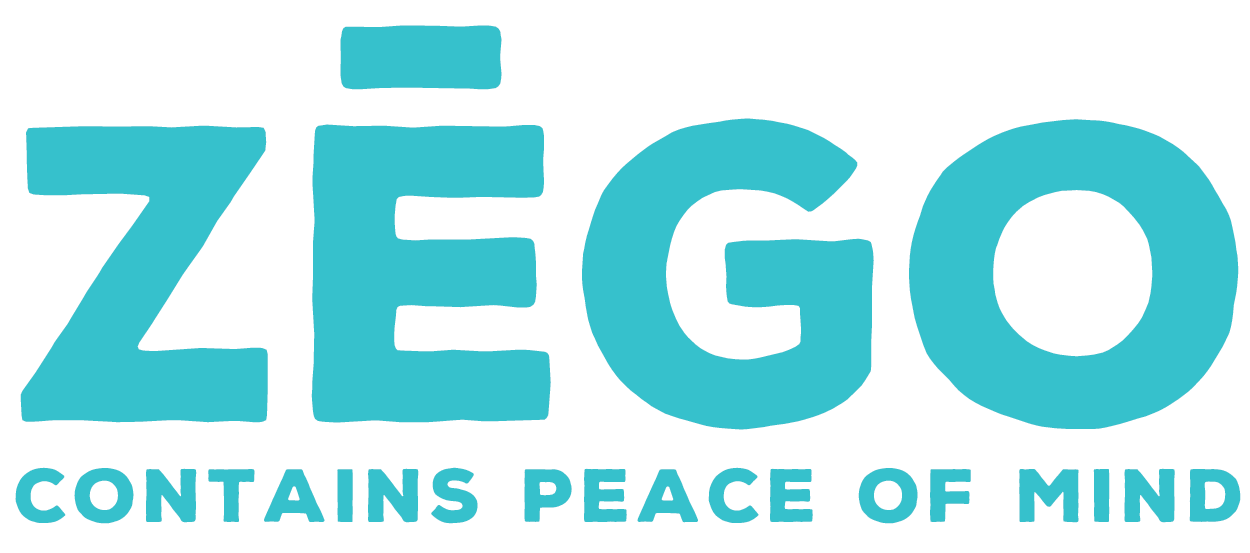
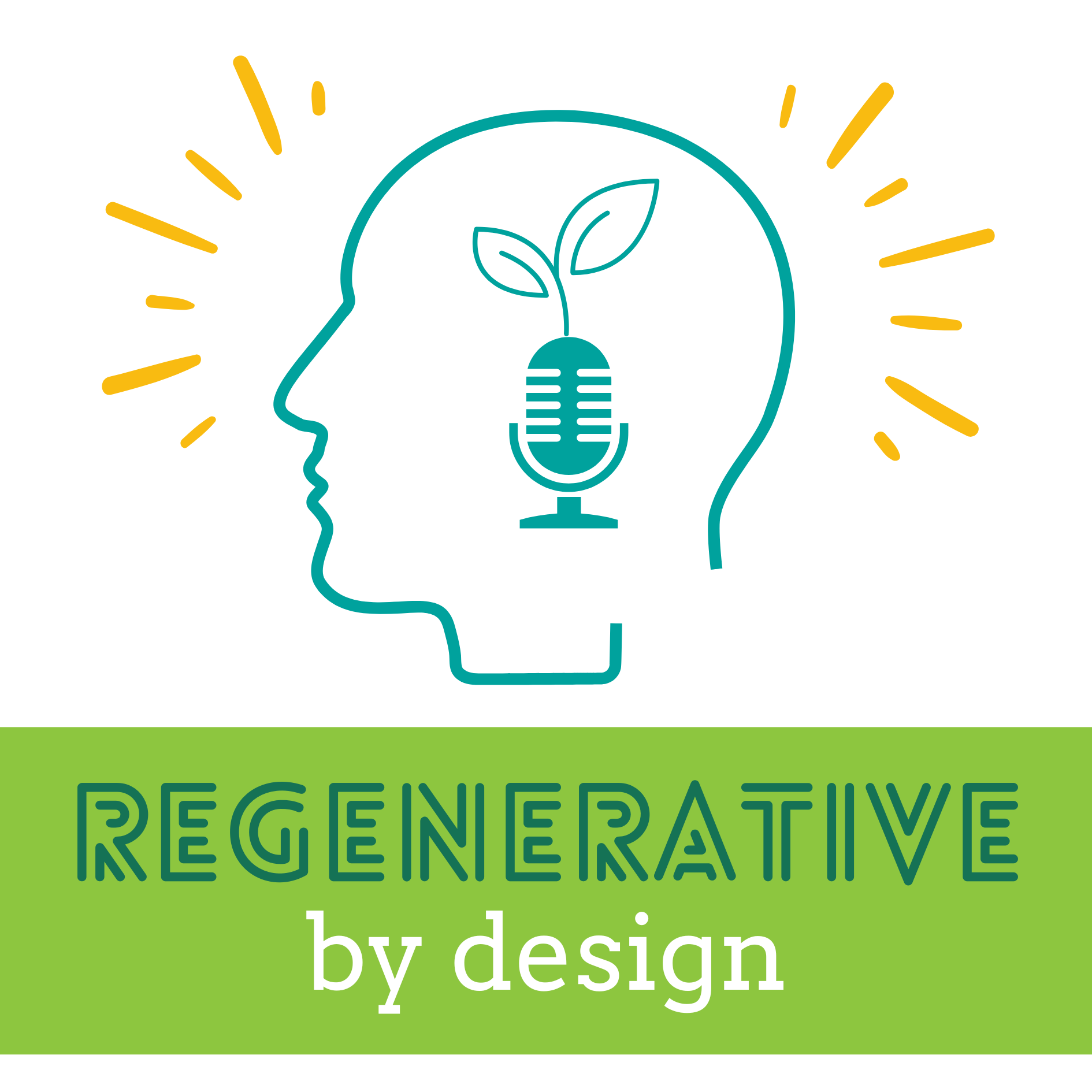
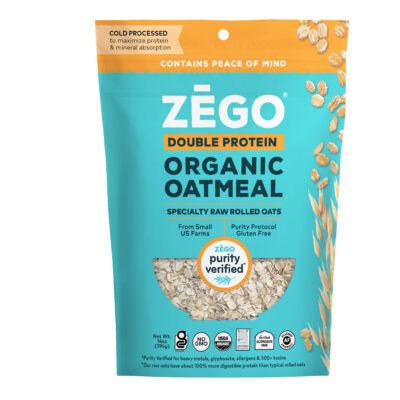
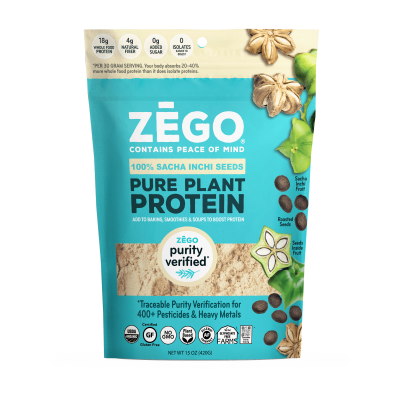
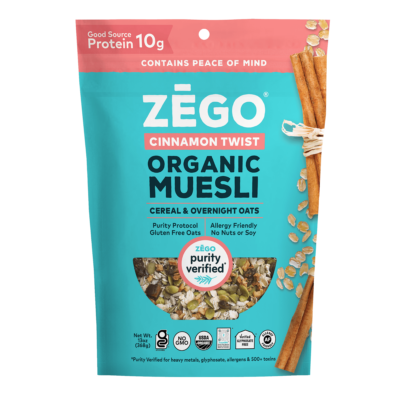
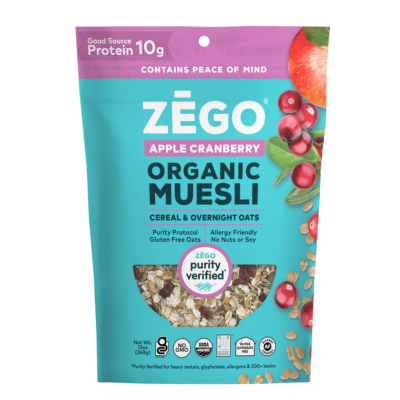
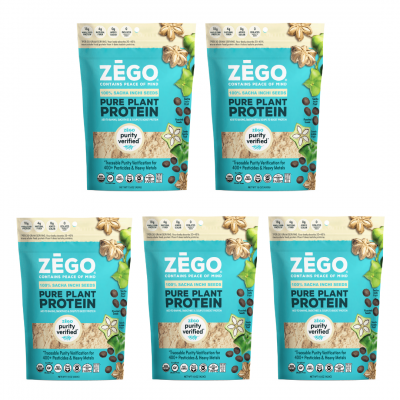
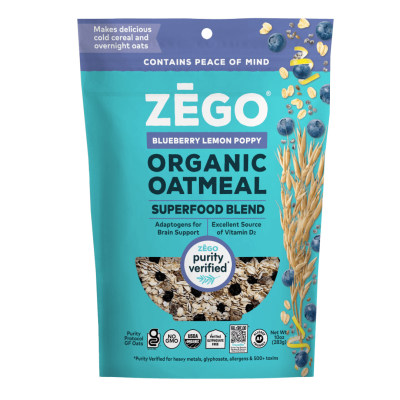
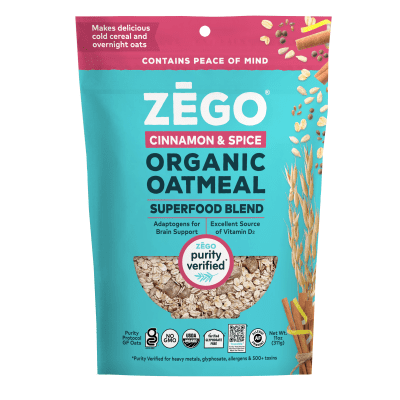
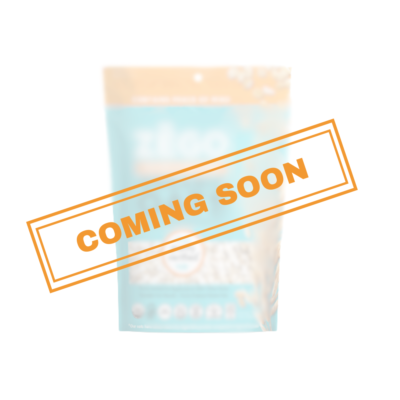
0 Comments for “Regenerative by Design Podcast with Joni Kindwall-Moore at Snacktivist and ZEGO Founder Colleen Kavanagh”